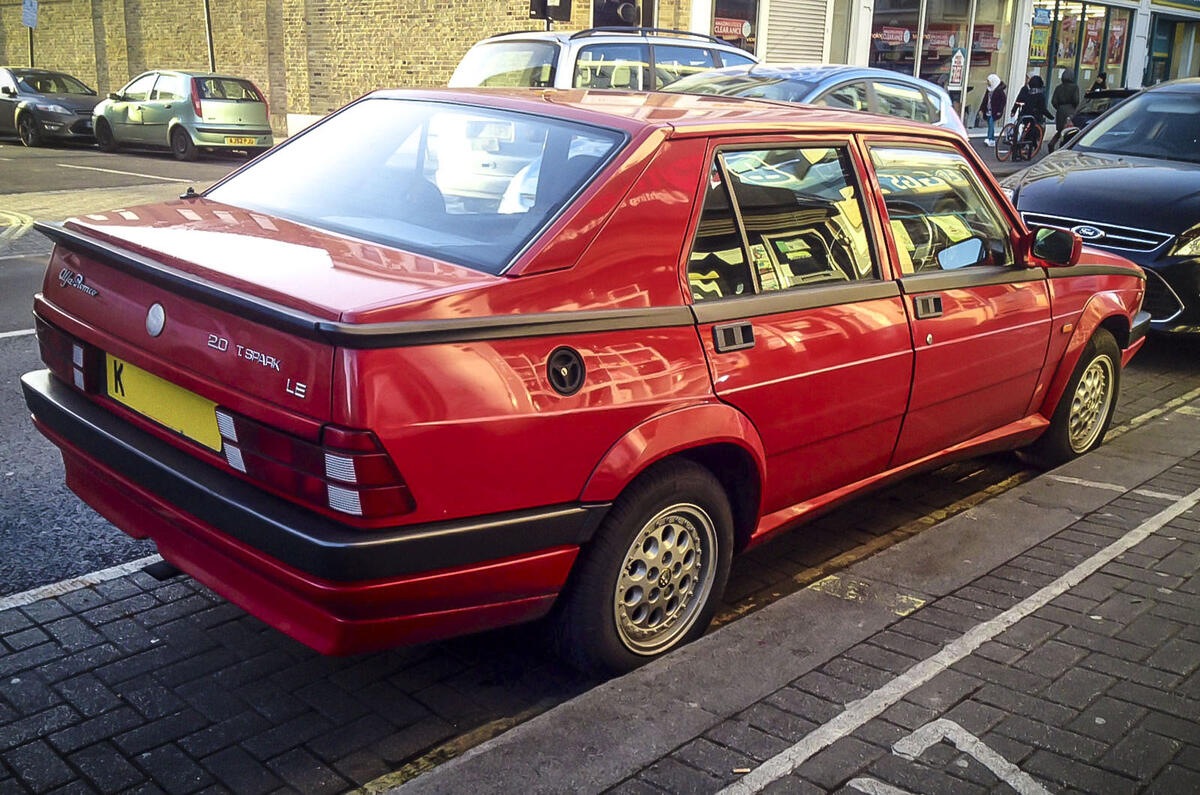I went for a wander to the supermarket on Sunday afternoon and spotted this well-preserved Alfa 75 at the side of the road. The K-plate indicates that this example was one of the last models registered in the UK.
The 75 is not just a roadside rarity, but it’s also something of a landmark production car for the brand. It was the last mainstream rear-drive Alfa Romeo and was developed while the company was still independent of Fiat.
The 75 had a transaxle layout – the gearbox is mounted on the rear axle – which gives a car tremendous inherent balance, something that was supercar-exotic back then. The 75 also had a de Dion rear axle, which gives most of the advantages of independent suspension, without the cost and complexity.
The 75’s rear brakes were mounted inboard – reducing the weight of the wheel and hub assembly – and the front suspension system was a decidedly unusual mix of torsion bars and conventional dampers.
In the embryonic ‘premium’ car market that existed in the mid-1980s, this made the 75 a much more sophisticated car than the competition.
First, there was the beautifully engineered but ageing rear-drive BMW E30 3-series, which rode on notoriously unpredictable semi-trailing arm suspension.Second, there was Audi’s 80 and 90 models. Sleekly modern and with superb build quality inside and out, they rode on a spectacularly nose-heavy and crude chassis. Finally, Mercedes’ 190E had both the sophisticated chassis and the engineering class and finish, but no pretence of sporting or enjoyable handling.
True, the Alfa 75 had the chassis and the engines to beat other premium brands, but fell down on styling fitness, interior finish and build quality.
However, the 75 – which was also sold in the US as the Milano – sold pretty well by the standards of the premium compact market of those days. But at the beginning of the 1990s Alfa was being hobbled by Fiat ownership just as BMW and Audi took a big step up with the E36 3 Series (which got the new Z-axle true independent rear suspension and super-modern styling) and the Audi A4 (same beautiful interior with slick double wishbone front suspension).




Join the debate
Add your comment
Well I think the obstacle to
75
Well.......
ALFA 75
Remember going on roadtest with a customer's, accompanied by my service manager (hello Dave), entered a corner quite quickly, and Dave shreiked. Just dug in.
Happy day's.